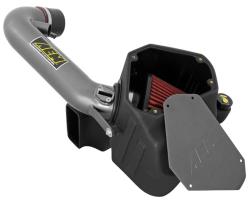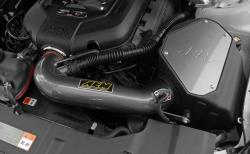Behind the Scenes of the Research and Development Department at AEM
- Feb 27, 2017
We sat down with the Product Development Manager, George Hsieh, here at AEM Induction to ask these questions and more. We hope this will help people understand just some of what goes into building the great intake systems that you have come to love from AEM. For more information about what AEM makes, visit aemintakes.com. AEM: Good morning, please tell the readers a little about yourself. George Hsieh: Good morning, my name is George Hsieh, and I am the AEM product development manager here at AEM AEM: In your own words, what does AEM Induction make? GH: AEM Induction makes performance air intake systems, turbo charge pipes, intercoolers, and strut tower bars. AEM: How do you decide which vehicles to make kits for? GH: The AEM product development team is made up of car enthusiasts, just like the customers that we make products for. Each one of us comes up with a list of vehicles then the lists get combined and refined based on feasibility. I then study industry data, historic sales data, and competitor products if available to put the final list together. AEM: What goes into designing, engineering, and building a complete intake system from start to finish?
AEM: How long does that process typically take? GH: The R&D process takes 2-3 weeks. AEM: What types of modeling programs or systems do you use during prototyping? GH: We use Solidworks for design and simulation. AEM: What considerations do you have to take into account during the design and engineering process? GH: Function/performance, styling, ease of installation, cost/price, and manufacturing lead time. AEM: For the 2011-2014 Ford Mustang, you offer several different intake systems. Why are there different versions of intakes for the same car? GH: The major difference between the 2 versions of intakes is one retains the factory air box while the other one provides an enclosed performance air box. The intake that retains the factory air box keeps the factory hydrocarbon absorber intact so it can be granted an E.O by the California Air Resource Board. AEM: Are there any special design elements or features used in this intake in particular? GH: On the 21-8122 and 21-8123 intake system, the enclosed air box is CAD designed and simulated in CFD to ensure laminar air flow around the oval conical air filter. This not only increases air flow, it allows the filter to utilize 100% of the surface area and promote uniform dust loading. The air box interfaces with the factory pressurized fresh air duct to take advantage of the pressurized air flow into the air box as the vehicle picks up speed. AEM: What makes this intake different/better than all the others?
There you have it. A lot goes into making the intakes that will help your car breathe better and make more power. And that is just the beginning. From there the kit has to go into production and be manufactured. So next time you pop the hood of your car and see that cold air intake sitting in there, maybe you’ll have a little better idea of what exactly went into building it. If you don’t have a cold air intake yet, visit aemintakes.com to see all the great products we make for your vehicle. | ||||
| ||||
| | ||||










